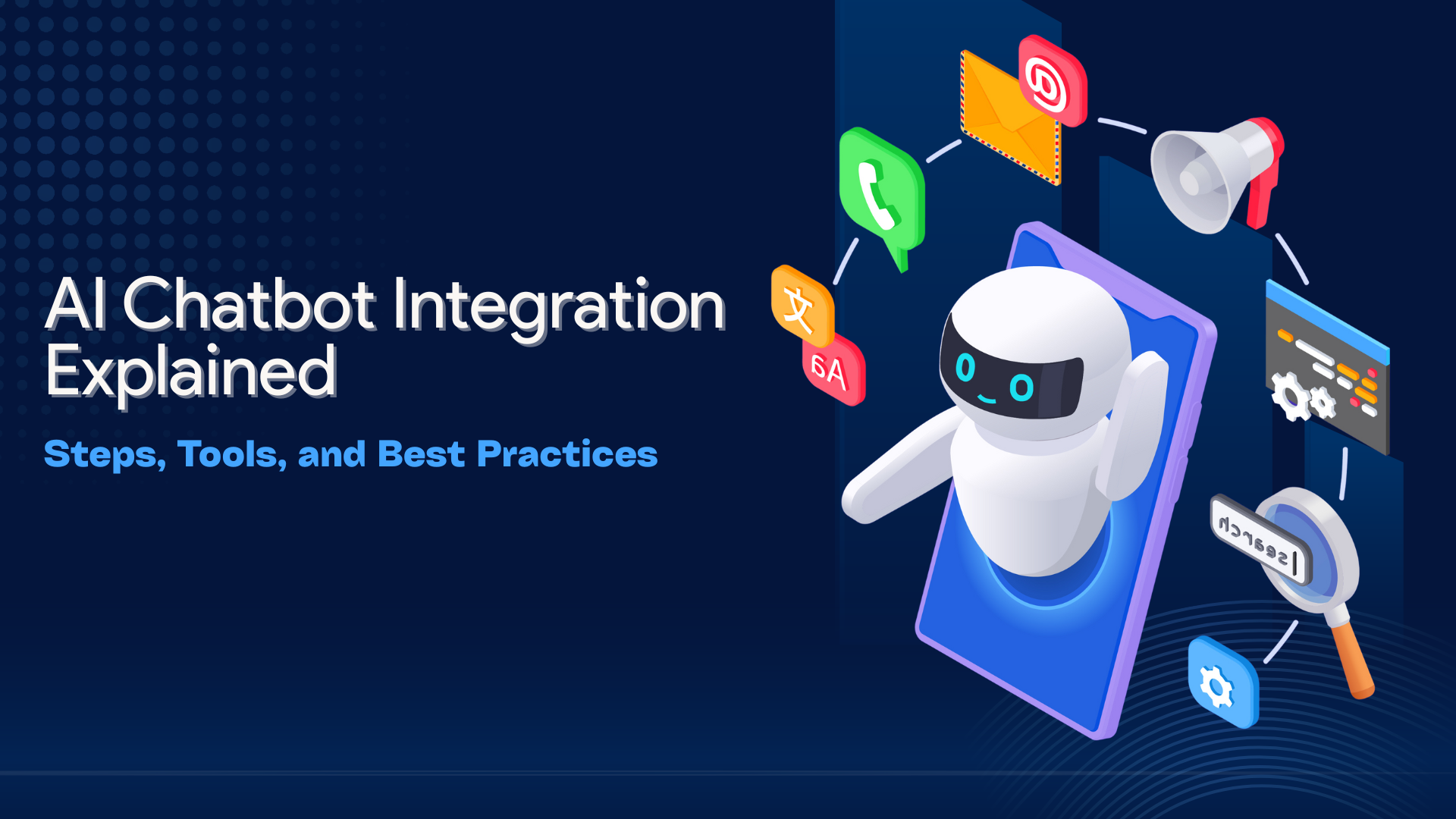Technology
Ensuring Privacy and Security in Your ChatGPT-based Chatbot

Introduction
In today’s digital world, chatbots have become an integral part of many startup apps, offering a seamless and efficient way for users to interact with businesses. ChatGPT, a cutting-edge chatbot technology, has gained popularity due to its natural language understanding capabilities and adaptability. However, as with any technology handling sensitive user information, it is crucial to ensure privacy and security in your ChatGPT-based chatbot for your startup app. This blog will provide you with a comprehensive approach to how to safeguard user data and maintain a secure chatbot environment.
Privacy by Design
Privacy by Design is a proactive approach to embed privacy and security considerations into the design and development of a ChatGPT-based chatbot from the onset. By integrating privacy principles at the core of your chatbot, you can minimize the risk of data breaches and ensure compliance with data protection laws. Here are some key strategies to implement Privacy by Design in your startup app’s chatbot:
- Begin with a privacy-first mindset: Treat privacy as a fundamental aspect of chatbot development, rather than an afterthought. Involve privacy experts and stakeholders in the design and development process to ensure that privacy concerns are addressed from the beginning.
- Conduct Privacy Impact Assessments (PIAs): Carry out PIAs to identify potential privacy risks and vulnerabilities in your chatbot. Use the PIA results to implement necessary privacy controls and mitigation strategies.
- Minimize data collection: Only collect user data that is essential for the chatbot’s functionality. Avoid collecting or storing sensitive information, such as personally identifiable information (PII), unless absolutely necessary.
- Implement the principle of least privilege: Restrict access to user data on a need-to-know basis, granting only the minimum level of access required for a specific role or function.
- Design for user consent and control: Ensure users have the ability to provide, withdraw, or modify their consent for data collection and usage. Allow users to access, edit, or delete their personal information stored within the chatbot system.
- Build in security measures: Integrate security features like data encryption, secure storage, and user authentication and authorization into the chatbot’s design. Continuously monitor and update security measures to stay ahead of emerging threats and vulnerabilities.
By incorporating Privacy by Design principles into your ChatGPT-based chatbot, you not only create a system that is compliant with data protection laws but also establish a strong foundation of trust with your users.

Image by: https://contrank.com/
Data Encryption and Secure Storage
One of the most critical aspects of ensuring privacy and security in your ChatGPT-based chatbot is to implement robust data encryption and secure storage mechanisms. By doing so, you can protect user data from unauthorized access or theft. Here are some key strategies to implement data encryption and secure storage in your startup app’s chatbot:
- Use industry-standard encryption algorithms: Implement strong encryption algorithms like AES-256 to secure data at rest and in transit. Avoid using weak encryption methods like ROT13 or XOR.
- Encrypt all sensitive data: Encrypt all user data, including login credentials, personal information, and chat history. Ensure that encryption keys are securely stored and managed to prevent unauthorized access.
- Implement secure storage practices: Use secure storage solutions like cloud storage or dedicated servers. Ensure that all data is stored in encrypted form at rest and is only accessible to authorized personnel.
- Follow secure data deletion practices: Implement secure data deletion practices to permanently delete user data that is no longer required. Ensure that all backups and replicas of the data are also securely deleted.
- Regularly monitor and update security measures: Continuously monitor data access logs and audit trails for suspicious activity. Regularly update security measures, including encryption algorithms and storage solutions, to stay ahead of emerging threats.
By implementing data encryption and secure storage practices in your ChatGPT-based chatbot, you can provide users with the confidence that their data is protected and secure, further enhancing their trust in your startup app.

Image by: https://contrank.com/
User Authentication and Authorization
User authentication and authorization are critical components of ensuring privacy and security in your ChatGPT-based chatbot. By implementing robust authentication and authorization mechanisms, you can prevent unauthorized access to user data and ensure that only authorized personnel can access sensitive information. Here are some key strategies to implement user authentication and authorization in your startup app’s chatbot:
- Implement multi-factor authentication (MFA): Implement MFA to ensure that only authorized users can access the chatbot system. Use a combination of factors like passwords, biometrics, and OTPs for stronger authentication.
- Follow secure password policies: Enforce strong password policies, including minimum length, complexity, and expiration. Encourage users to use password managers to generate and store strong passwords securely.
- Use role-based access control (RBAC): Implement RBAC to control access to chatbot data based on user roles and permissions. Grant only the minimum level of access required for a specific role or function.
- Monitor and log access to data: Implement audit trails and data access logs to track and monitor access to user data. Regularly review logs to detect and investigate any suspicious activity.
- Regularly update authentication and authorization mechanisms: Regularly update authentication and authorization mechanisms to stay ahead of emerging threats and vulnerabilities. Conduct regular security assessments and penetration testing to identify and address any weaknesses.
By implementing robust user authentication and authorization mechanisms in your ChatGPT-based chatbot, you can ensure that user data is protected from unauthorized access, further enhancing user trust and confidence in your startup app.

Image by: https://contrank.com/
Regular Security Audits and Updates
Regular security audits and updates are essential to maintain the privacy and security of your ChatGPT-based chatbot. By conducting regular security audits and updating security measures, you can identify and address any vulnerabilities or weaknesses that could compromise user data. Here are some key strategies to implement regular security audits and updates in your startup app’s chatbot:
- Conduct regular security assessments: Conduct regular security assessments to identify any vulnerabilities or weaknesses in the chatbot system. Use tools like vulnerability scanners, penetration testing, and code reviews to identify potential security issues.
- Patch vulnerabilities promptly: Promptly patch any identified vulnerabilities or weaknesses to prevent exploitation by attackers. Establish a process to track and manage security patches and updates.
- Monitor for suspicious activity: Monitor chatbot activity for any suspicious or unauthorized access attempts. Use intrusion detection and prevention systems to detect and block potential attacks.
- Update security measures regularly: Regularly update security measures, including encryption algorithms, access control mechanisms, and firewalls, to stay ahead of emerging threats. Conduct regular penetration testing and vulnerability assessments to identify and address any weaknesses in the chatbot system.
- Educate users on security best practices: Educate users on security best practices, including strong password policies and avoiding phishing scams. Encourage users to report any suspicious activity or security incidents.
By implementing regular security audits and updates in your ChatGPT-based chatbot, you can ensure that your startup app’s chatbot remains secure and compliant with data protection laws. Regular security audits and updates can also demonstrate your commitment to protecting user data and enhance user trust and confidence in your chatbot system.

Image by: https://contrank.com/
Anonymize Data and Limit Data Retention
Anonymizing data and limiting data retention are crucial steps in protecting user privacy in your ChatGPT-based chatbot. By anonymizing data, you can protect user identities while still providing valuable insights into user behavior. By limiting data retention, you can minimize the risk of data breaches and protect user data from unauthorized access. Here are some key strategies to implement anonymization and data retention in your startup app’s chatbot:
- Anonymize user data: Anonymize user data by removing personally identifiable information (PII), such as name and email address. Use encryption techniques to protect any residual PII data that cannot be removed.
- Limit data retention: Implement data retention policies to limit the amount of data stored by the chatbot system. Only retain data that is necessary for the chatbot’s functionality and business needs.
- Educate ChatGPT developers: Educate ChatGPT developers on the importance of anonymizing data and limiting data retention. Ensure that developers understand the policies and procedures for anonymizing data and limiting data retention.
- Conduct regular data audits: Conduct regular data audits to ensure that only necessary data is being collected and retained. Use the audit results to refine data retention policies and procedures.
- Implement data masking: Use data masking techniques to further protect user data by replacing sensitive data with dummy data. Use data masking in situations where sensitive data must be temporarily stored for chatbot functionality.
By implementing anonymization and data retention strategies in your ChatGPT-based chatbot, you can protect user privacy and minimize the risk of data breaches. Educating ChatGPT app developers and conducting regular data audits can also demonstrate your commitment to protecting user privacy and building trust with your users.

Image by: https://contrank.com/
Secure Data Transmission
Secure data transmission is essential to ensure that user data is protected while being transmitted between the ChatGPT-based chatbot and other systems. By implementing robust data transmission protocols, you can prevent interception or tampering of user data during transit. Here are some key strategies to implement secure data transmission in your startup app’s chatbot:
- Use secure communication protocols: Use secure communication protocols like HTTPS or SSL/TLS to encrypt data in transit. Avoid using unencrypted communication protocols like HTTP or FTP.
- Encrypt all data in transit: Encrypt all user data in transit, including chat messages, authentication tokens, and user inputs. Use strong encryption algorithms like AES or RSA to ensure that data is protected during transit.
- Validate data inputs: Validate all user inputs to prevent injection attacks like SQL injection or XSS attacks. Use input validation techniques like whitelist validation or input sanitization.
- Implement firewall and intrusion detection systems: Implement firewalls and intrusion detection systems to detect and block unauthorized access attempts. Continuously monitor and update these systems to stay ahead of emerging threats.
- Train ChatGPT experts: Train ChatGPT experts on secure data transmission practices to ensure that all data is transmitted securely. Conduct regular training sessions to keep ChatGPT experts up-to-date on emerging threats and vulnerabilities.
By implementing secure data transmission strategies in your ChatGPT-based chatbot, you can protect user data during transit and prevent unauthorized access or tampering. Educating GPT experts and implementing firewall and intrusion detection systems can further enhance the security of your chatbot system and provide users with confidence that their data is protected.

Image by: https://contrank.com/
Transparency and User Control
Transparency and user control are key components of maintaining user trust and confidence in your ChatGPT-based chatbot. By providing transparency around data usage and giving users control over their data, you can build a strong relationship with your users based on trust and transparency. Here are some key strategies to implement transparency and user control in your startup app’s chatbot:
- Provide clear privacy policies: Provide clear and concise privacy policies that explain how user data is collected, used, and protected. Ensure that privacy policies are easily accessible to users and regularly updated.
- Obtain user consent: Obtain user consent before collecting and using any user data. Clearly explain what data is being collected and how it will be used.
- Allow user control over data: Provide users with the ability to control their data, including the ability to edit, delete, or export their data. Use clear and easy-to-use interfaces to provide users with these capabilities.
- Educate ChatGPT developers: Educate ChatGPT developers on the importance of transparency and user control. Ensure that developers understand the policies and procedures for providing transparency and user control.
- Be transparent about data usage: Be transparent about how user data is being used and who has access to it. Clearly communicate any changes in data usage or access to users.
By implementing transparency and user control strategies in your ChatGPT-based chatbot, you can build a strong relationship with your users based on trust and transparency. Educating ChatGPT developers and providing clear privacy policies can demonstrate your commitment to protecting user privacy and building user trust in your chatbot system.

Image by: https://contrank.com/
Compliance with Data Protection Laws
Compliance with data protection laws is a crucial aspect of ensuring privacy and security in your ChatGPT-based chatbot. By complying with relevant data protection laws, you can protect user data and avoid legal penalties. Here are some key strategies to ensure compliance with data protection laws in your startup app’s chatbot:
- Understand applicable data protection laws: Understand the applicable data protection laws and regulations that apply to your chatbot system. Ensure that ChatGPT app experts understand these laws and regulations as well.
- Implement necessary controls and procedures: Implement necessary controls and procedures to ensure compliance with data protection laws, such as GDPR or CCPA. Use frameworks like Privacy Shield to ensure that data is protected during international transfers.
- Conduct privacy impact assessments: Conduct privacy impact assessments to identify and address any potential privacy risks in your chatbot system. Use the results of these assessments to implement necessary controls and procedures.
- Design for privacy: Design your chatbot system with privacy in mind, such as by minimizing data collection and implementing strong data security measures. Follow Privacy by Design principles to ensure that privacy is embedded into the chatbot system from the outset.
- Regularly update policies and procedures: Regularly update policies and procedures to ensure that they remain compliant with data protection laws and regulations. Conduct regular audits and assessments to identify areas for improvement.
By ensuring compliance with data protection laws, you can protect user data and avoid legal penalties. Educating ChatGPT experts, conducting privacy impact assessments, and designing for privacy can further enhance your compliance efforts and build trust with your users.
Conclusion
Protecting user privacy and ensuring data security is essential for any ChatGPT-based chatbot in a startup app. By implementing the strategies outlined in this guide, you can enhance the privacy and security of your chatbot system and build trust with your users.
Reference
Ensuring Privacy and Security in Your ChatGPT-based Chatbot
Maintenance
The Role of Smart Terminals and Terminal Management Systems

As manufacturing and energy operations become more complex and data-intensive, organizations are increasingly turning to smart terminals to improve efficiency, reliability, and safety. At the center of this transformation is the terminal management system, a digital backbone that connects equipment, people, and processes across the operational value chain. When combined with advanced analytics and integrated with a downstream commercial control system, smart terminals enable real-time decision-making and significantly reduce downtime.
This article explores how smart terminals function in manufacturing and energy sectors, the role of terminal management systems, and why their integration with downstream commercial control systems is becoming essential.

Understanding Smart Terminals
Smart terminals are digitally enabled operational hubs that manage the movement, storage, and processing of materials such as raw inputs, intermediate products, and finished goods. In manufacturing, this may involve handling chemicals, components, or bulk materials. In the energy sector, smart terminals often manage fuels, gases, lubricants, or petrochemical products.
Unlike traditional terminals that rely heavily on manual coordination, smart terminals use automation, sensors, and software platforms to monitor throughput, equipment health, inventory levels, and operational constraints in real time. The terminal management system acts as the central command layer, orchestrating these activities while ensuring compliance, safety, and efficiency.
Role of a Terminal Management System in Manufacturing
In manufacturing environments, terminals are critical choke points. Delays in material intake, internal transfers, or outbound logistics can quickly ripple across production lines.
A modern terminal management system helps manufacturers by:
-
Optimizing material flow: It schedules inbound and outbound movements to avoid congestion and idle time.
-
Enhancing visibility: Real-time dashboards show inventory levels, equipment status, and throughput performance.
-
Reducing manual intervention: Automated workflows replace paper-based processes, minimizing errors.
-
Improving maintenance planning: Predictive insights highlight equipment issues before failures occur.
By centralizing control, the terminal management system ensures that materials arrive at the right place, at the right time, and in the right quantity—supporting lean manufacturing and just-in-time production strategies.
Smart Terminals in the Energy Sector
In the energy sector, terminals play a vital role in downstream operations, including storage, blending, and distribution. The stakes are particularly high: safety risks, regulatory requirements, and volatile demand patterns require precise coordination.
Here, a terminal management system supports:
-
Safe handling of hazardous materials through automated checks, interlocks, and compliance reporting.
-
Throughput optimization by balancing loading, unloading, and storage capacity.
-
Real-time reconciliation between physical volumes and commercial records.
-
Integration with enterprise systems for planning, billing, and compliance.
Energy terminals increasingly rely on AI-enabled capabilities within the terminal management system to forecast demand, identify bottlenecks, and dynamically adjust schedules.
Integration with Downstream Commercial Control System
While operational efficiency is critical, commercial accuracy is equally important. This is where the downstream commercial control system comes into play.
A downstream commercial control system manages contracts, pricing, invoicing, nominations, and regulatory reporting. When integrated with the terminal management system, it creates a seamless bridge between physical operations and commercial execution.
Key benefits of this integration include:
-
Accurate volume and quality data: Automated data transfer reduces discrepancies between measured and billed quantities.
-
Faster reconciliation: Real-time synchronization minimizes delays in closing transactions.
-
Improved compliance: Regulatory and contractual obligations are enforced consistently across systems.
-
Enhanced profitability: Better alignment between operations and commercial decisions reduces losses and penalties.
For both manufacturing and energy companies, this integration ensures that operational excellence directly translates into commercial performance.
AI and Advanced Analytics in Smart Terminals
Smart terminals go beyond basic automation by leveraging AI and advanced analytics embedded within the terminal management system. These capabilities enable:
-
Predictive downtime reduction: Machine learning models identify early warning signs of equipment or process failures.
-
Dynamic throughput planning: AI adjusts schedules based on real-time constraints such as weather, demand shifts, or equipment availability.
-
Scenario analysis: Operators can simulate operational changes and understand their impact before execution.
When insights from AI-driven terminal management systems feed into the downstream commercial control system, organizations can make faster, more informed decisions that balance operational feasibility with commercial priorities.
Strategic Value for Manufacturing and Energy Leaders
Adopting smart terminals is not just a technology upgrade—it is a strategic move. Manufacturing and energy leaders gain:
-
Greater resilience against disruptions
-
Lower operating costs through reduced downtime
-
Higher asset utilization and throughput
-
Stronger alignment between operations and commercial outcomes
As markets become more competitive and regulatory scrutiny increases, the ability to operate terminals intelligently and transparently becomes a key differentiator.
Conclusion
Smart terminals are reshaping how manufacturing and energy companies manage complex operations. At the heart of this transformation lies the terminal management system, enabling real-time visibility, automation, and AI-driven optimization. When tightly integrated with a downstream commercial control system, organizations achieve a unified view of physical and commercial performance.
Together, these systems help reduce downtime, improve throughput, enhance safety, and ensure that operational efficiency directly supports business objectives. As digital transformation accelerates, smart terminals will continue to play a critical role in building more efficient, resilient, and profitable industrial operations.
Digital Development
Guide to SEO for Counselors: Building Trust and Visibility Online

In today’s digital world, people seeking mental health support often begin their journey online. They search for counselors, therapists, and mental health professionals they can trust—usually through Google. This is where working with a counselor SEO company becomes essential. Unlike general marketing agencies, a specialized SEO partner understands the sensitivity, ethics, and trust required in the mental health space.
Search engine optimization for counselors is not about aggressive promotion. It’s about visibility, credibility, and helping the right people find the right support at the right time.

The Unique SEO Challenges Counselors Face
Mental health professionals work in one of the most regulated and emotionally sensitive industries online. Unlike e-commerce or general service businesses, counselors cannot rely on aggressive marketing tactics or promotional language. Every message must respect ethical standards, professional guidelines, and the emotional state of people seeking help. Because of this, standard SEO strategies often fall short or even create risk.
Counselors face several unique challenges, including strict advertising and ethical guidelines that limit how services can be promoted. Many platforms restrict claims, language, and targeting related to mental health, which means SEO content must be carefully written to inform rather than persuade. One poorly worded page can damage trust or violate professional expectations.
There is also high competition in local searches, especially in cities where many therapists and counseling practices operate within the same area. Ranking for local keywords requires more than basic optimization—it demands accurate listings, consistent location signals, and content that clearly communicates expertise and specialization.
Finally, counseling websites must offer content that is informative, empathetic, and accurate. Articles, service pages, and FAQs need to explain complex emotional topics in plain language while remaining clinically responsible. This balance is difficult to achieve without experience in the mental health space.
Because of these factors, choosing a counselor-focused SEO company matters. The right strategy blends technical optimization with human-centered messaging, ensuring counselors are visible online while remaining ethical, trustworthy, and aligned with their professional values.
How a Counselor SEO Company Makes a Difference
A professional counselor SEO company doesn’t just aim for rankings—it focuses on meaningful outcomes. The goal is to attract people genuinely seeking help, not just website traffic.
Key areas they work on include:
1. Local SEO Optimization
Most clients look for help near them. Optimizing Google Business Profiles, local keywords, and location-based pages helps counselors appear in relevant local searches.
2. Trust-Building Content
SEO content in mental health must be calm, reassuring, and educational. Blog posts, service pages, and FAQs are crafted to answer real client concerns while following SEO best practices.
3. Website Structure and Technical Health
Fast loading speed, mobile responsiveness, secure browsing, and clear navigation are critical. These elements improve both user experience and search engine performance.
4. Ethical Keyword Targeting
Instead of pushing high-volume keywords aggressively, counselor SEO focuses on intent-based phrases that align with genuine client needs.
Why Specialized Marketing Matters More Than Ever
Mental health services rely heavily on trust. A poorly written ad or misleading page can turn potential clients away instantly. This is where experienced agencies like Triumph Marketing Co stand out.
Rather than using generic digital marketing templates, Triumph Marketing Co understands how to align SEO strategies with the emotional and professional responsibilities of counselors. Their approach focuses on long-term credibility, sustainable growth, and ethical marketing practices.
Building Long-Term Visibility, Not Short-Term Hype
SEO for counselors is not a quick fix—it’s a long-term investment. When done correctly, it creates a strong digital foundation that continues to generate inquiries over time.
Benefits of working with a dedicated counselor SEO company include:
- Consistent, organic client inquiries
- Improved online reputation and authority
- Better engagement with the right audience
- Reduced dependency on paid ads
Over time, SEO becomes one of the most cost-effective ways for counselors to grow their practice while staying aligned with professional values.
Choosing the Right SEO Partner for Counselors
Selecting an SEO partner is a critical decision for counselors, as it directly affects how their services are represented to people seeking support. Rather than focusing only on rankings or bold growth promises, counselors should look for a partner who understands both the technical side of SEO and the ethical responsibilities of the mental health profession.
One of the most important factors is experience in the mental health or healthcare niche. SEO strategies that work for retail or local services often do not translate well to counseling practices. A knowledgeable partner understands privacy concerns, compliance requirements, and the importance of using language that feels respectful and reassuring.
Transparent strategies and reporting are equally essential. Counselors should clearly understand what work is being done, why certain keywords are targeted, and how performance is measured. Regular reports that explain results in plain language help build trust and ensure the strategy remains aligned with practice goals.
Agencies like Triumph Marketing Co emphasize collaboration rather than control. By working closely with counselors and respecting their comfort levels, they help ensure that online visibility grows in a way that feels authentic, ethical, and aligned with the counselor’s mission of care.
Final Thoughts
In a profession where empathy, trust, and credibility come first, online visibility should feel supportive—not sales-driven. A thoughtful counselor SEO company helps connect people who are actively seeking help with professionals who are prepared to guide them, without compromising ethics or sensitivity.
Educational platforms like Contrank highlight how specialized, ethical SEO strategies can support long-term growth for service-based professionals. With the right partner, such as Triumph Marketing Co, counselors can build a strong online presence that attracts the right audience, strengthens trust, and grows their practice steadily—while staying fully aligned with their mission of care and compassion.
Digital Development
Mastering AI Chatbot Integration: A Guide for Modern Applications
-
Business2 years ago
Cybersecurity Consulting Company SequelNet Provides Critical IT Support Services to Medical Billing Firm, Medical Optimum
-
Business2 years ago
Team Communication Software Transforms Operations at Finance Innovate
-
Business3 years ago
Project Management Tool Transforms Long Island Business
-
Business2 years ago
How Alleviate Poverty Utilized IPPBX’s All-in-One Solution to Transform Lives in New York City
-
health3 years ago
Breast Cancer: The Imperative Role of Mammograms in Screening and Early Detection
-
Sports3 years ago
Unstoppable Collaboration: D.C.’s Citi Open and Silicon Valley Classic Unite to Propel Women’s Tennis to New Heights
-
Art /Entertainment3 years ago
Embracing Renewal: Sizdabedar Celebrations Unite Iranians in New York’s Eisenhower Park
-
Finance3 years ago
The Benefits of Starting a Side Hustle for Financial Freedom

































